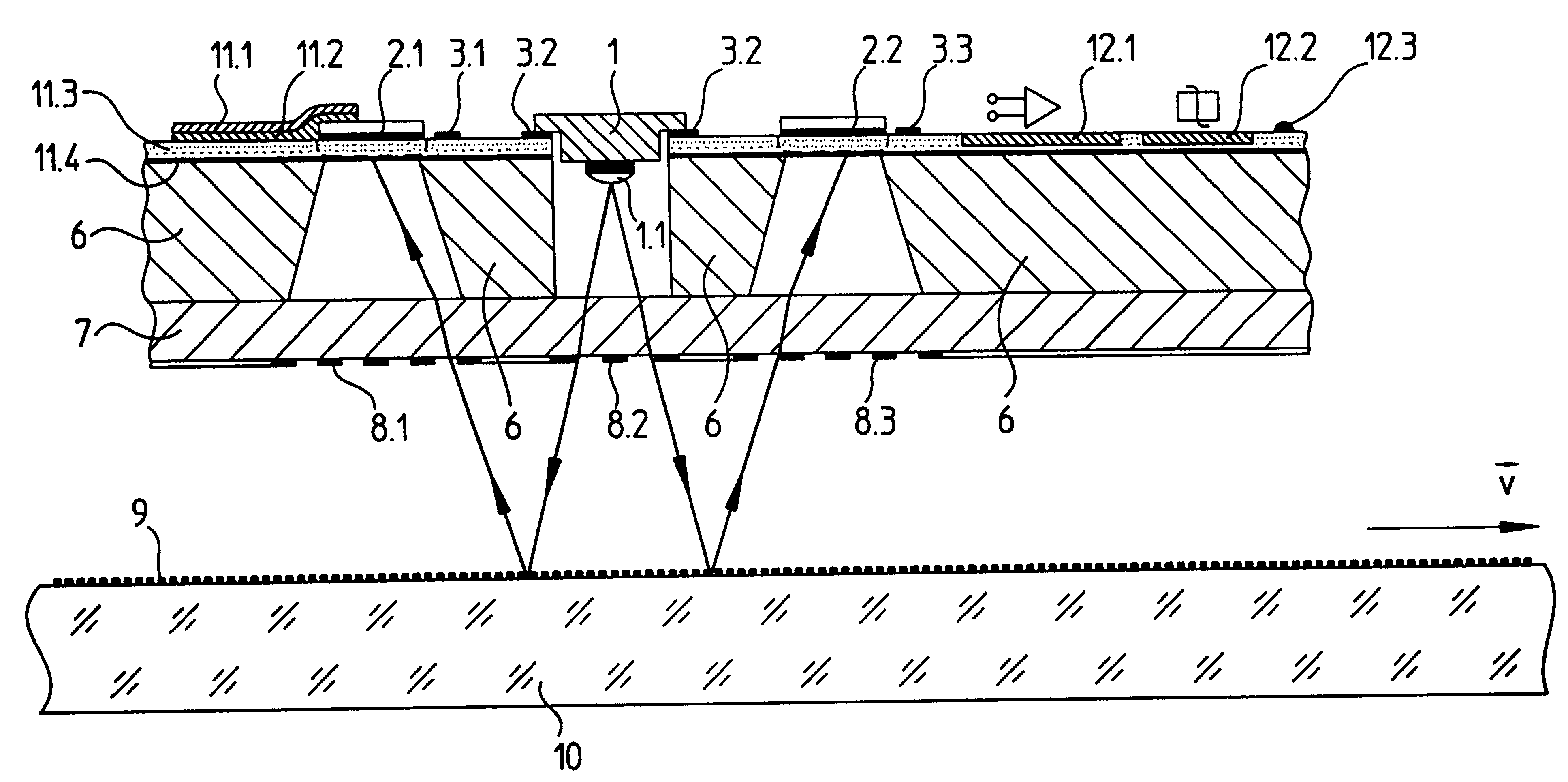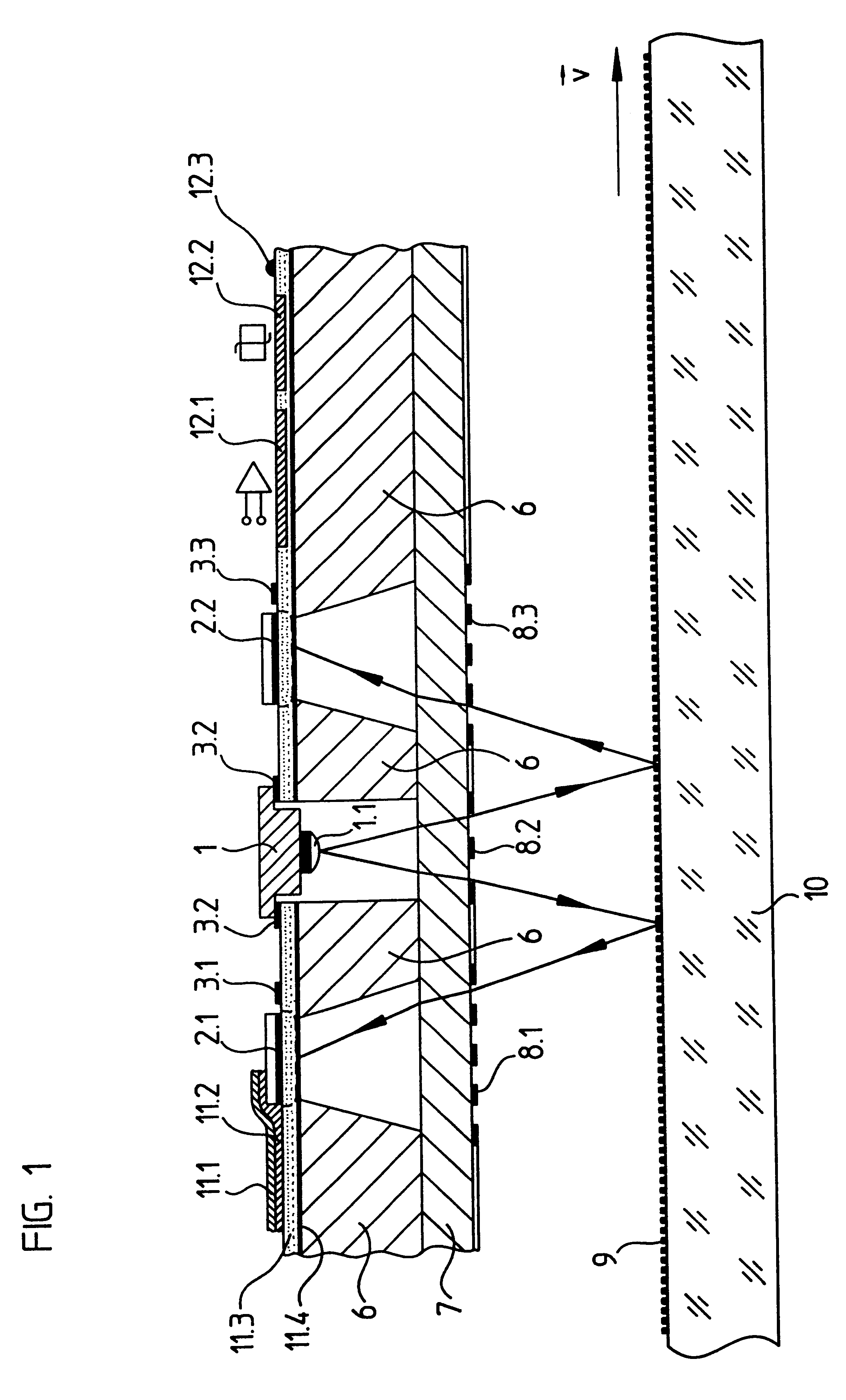Optical detector for measuring relative displacement of an object on which a grated scale is formed
a technology of optical detector and relative displacement, which is applied in the direction of beam/ray focussing/reflecting arrangement, instruments, and converting sensor output, etc., can solve the problem of large space required to assemble the entire arrangement, two assemblies are formed individually, and the exact connection between the carrier and the semiconductor material is difficult to form
- Summary
- Abstract
- Description
- Claims
- Application Information
AI Technical Summary
Problems solved by technology
Method used
Image
Examples
Embodiment Construction
The sensor according to the invention is described below with reference to an exemplary embodiment that contains a length-measuring system. However, it is possible to use the sensor according to the invention in an angle-measuring system, or in a two-dimensional measuring system, without significant modifications.
In the drawing, the optoelectronic sensor of the invention is depicted schematically. On the side of semiconductor substrate 6 facing away from scale 10, photo-diodes 2.1 and 2.2 are arranged underneath passivizing layers 11.1, 11.2, which can be made of silicon oxide and / or silicon nitrite. The manner of manufacturing the photo-diodes is described in German Patent Application 196 18 593 A1, and will not be repeated. Photo diodes 2.1 and 2.2 are produced directly on semiconductor substrate 6, which forms the sensor according to the invention. Two photo diodes 2.1 and 2.2 represent at least one functional assembly, which can contain a plurality of photo diodes or a plurality...
PUM
 Login to View More
Login to View More Abstract
Description
Claims
Application Information
 Login to View More
Login to View More - R&D
- Intellectual Property
- Life Sciences
- Materials
- Tech Scout
- Unparalleled Data Quality
- Higher Quality Content
- 60% Fewer Hallucinations
Browse by: Latest US Patents, China's latest patents, Technical Efficacy Thesaurus, Application Domain, Technology Topic, Popular Technical Reports.
© 2025 PatSnap. All rights reserved.Legal|Privacy policy|Modern Slavery Act Transparency Statement|Sitemap|About US| Contact US: help@patsnap.com


